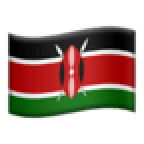A Kamba traditional wedding is not just a union between a man and a woman but a sacred journey that involves the blending of families, the honouring of ancestors, and the fulfilment of cultural rites.
Just like the Kikuyu traditional wedding, which we have covered before, the Kamba has its own set of stages.
Each stage has a specific meaning and order, and skipping any step may lead to the marriage being considered incomplete in the eyes of elders. Below are the key stages, arranged in the proper cultural sequence:
1. Tumuma Nduu – Sending the word
This is the very first stage where the groom’s family sends a small group of elders or respected relatives to the bride’s family to 'break the news' of their interest in their daughter. It is done discreetly and respectfully — there is no fanfare or gifts at this point.
The purpose is to test the waters and find out whether the bride’s family is open to marriage discussions. If the bride’s family gives a positive response, then the official process can begin.
)
2. Ntheo – Official introduction
After a positive response, the groom’s family organises an official visit to the bride’s home. This stage, known as Ntheo, involves elders from both families.
The groom’s side comes with small gifts such as tea leaves, tobacco, sugar, and occasionally a symbolic goat.
During this meeting, the groom’s family clearly states their intention to marry the girl. If the bride’s family accepts the proposal, it is considered an agreement to move forward with marriage plans.
3. Ngasya – Dowry negotiation
With the marriage plans accepted, the next stage is Ngasya, the dowry negotiation. This is one of the most important and sometimes most time-consuming stages.
The bride price can include cows, goats, money, traditional drinks, household items, and other agreed-upon gifts. The dowry is meant to show appreciation to the bride’s family, not to buy her, and is often paid in instalments.
Today, many families are flexible and may agree on a symbolic payment, especially if the groom is young or still building his livelihood.
)
Goats in a farm
READ ALSO: 4 Bukusu cultures you need to know before marrying into the community
4. Thasya Mukwa – Permission to plan the wedding
Once dowry agreements are underway or partly settled, the bride’s family grants permission for the wedding plans to proceed.
This is known as Thasya Mukwa. It is a green light to begin the next cultural steps, including organising the traditional ceremony and logistics.
From this point, the woman is officially considered betrothed, and both families begin preparing for the bride’s transition.
5. Kulatya Isanduku – Visiting the bride’s home with gifts
Kulatya Isanduku, literally meaning “tasting the suitcase”, is a special ceremony where the groom’s family brings gifts to the bride, usually in the form of a suitcase filled with clothes, shoes, innerwear, jewellery, and other personal items.
This event shows that the groom is ready to care for the bride and marks the beginning of her preparation for married life. It is also a sign of honour and respect.
6. Mathaa – Leaving home
Mathaa ceremony follows shortly after Kulatya Isanduku and focuses on the bride’s attire and her readiness for womanhood. She is dressed by women from her family and her friends in new clothes that symbolise a new chapter in her life.
During Mathaa, the bride is advised by older women on marriage, respect, and her new responsibilities. This stage can be emotional, as it marks her leaving her childhood home.
7. Kulatya Isanduku – Escorting the bride
Though it shares the same name, this second Kulatya Isanduku is distinct from the earlier gift-giving event. This time, it refers to the actual movement of the bride from her home to the groom’s homestead.
It is a joyous occasion filled with traditional songs, dances, ululations, and blessings. The bride carries her suitcase — now fully symbolic — and is escorted by family and friends to start her life with her husband.
)
READ ALSO: Do you agree with Wanjigi that strength of Kamba ladies makes them the ideal wives?
Once she arrives, she is warmly welcomed by the groom’s people, and the final celebrations, including feasting and blessings, are held. Blending Culture with Modern Life
While many Kamba people now blend their traditional practices with Christian or civil marriage rites, the traditional wedding remains a key cultural pillar.
It not only honours ancestral customs but also ensures families are involved in the sacred bond of marriage.


&format=jpeg)
)
&format=jpeg)
&format=jpeg)
&format=jpeg)